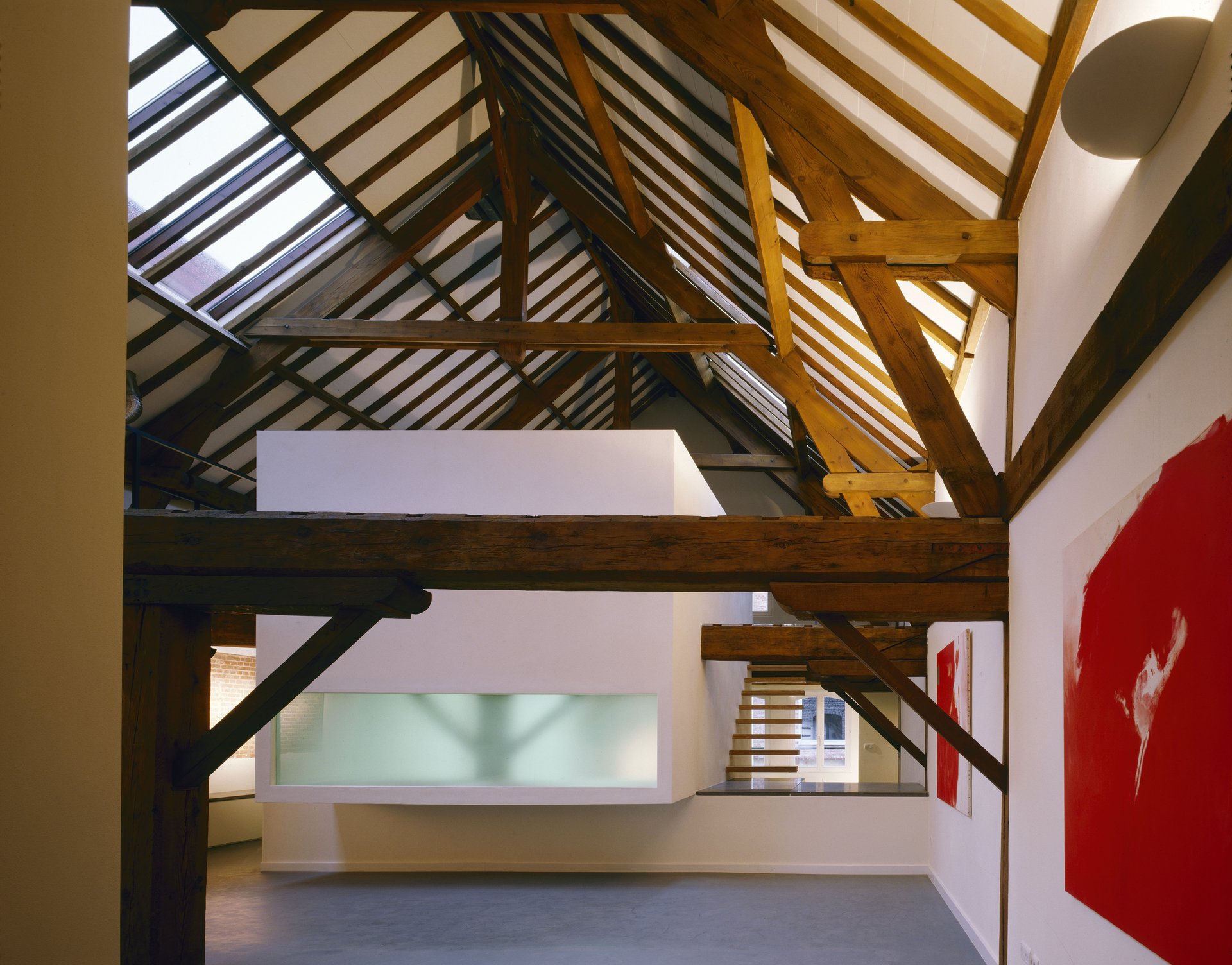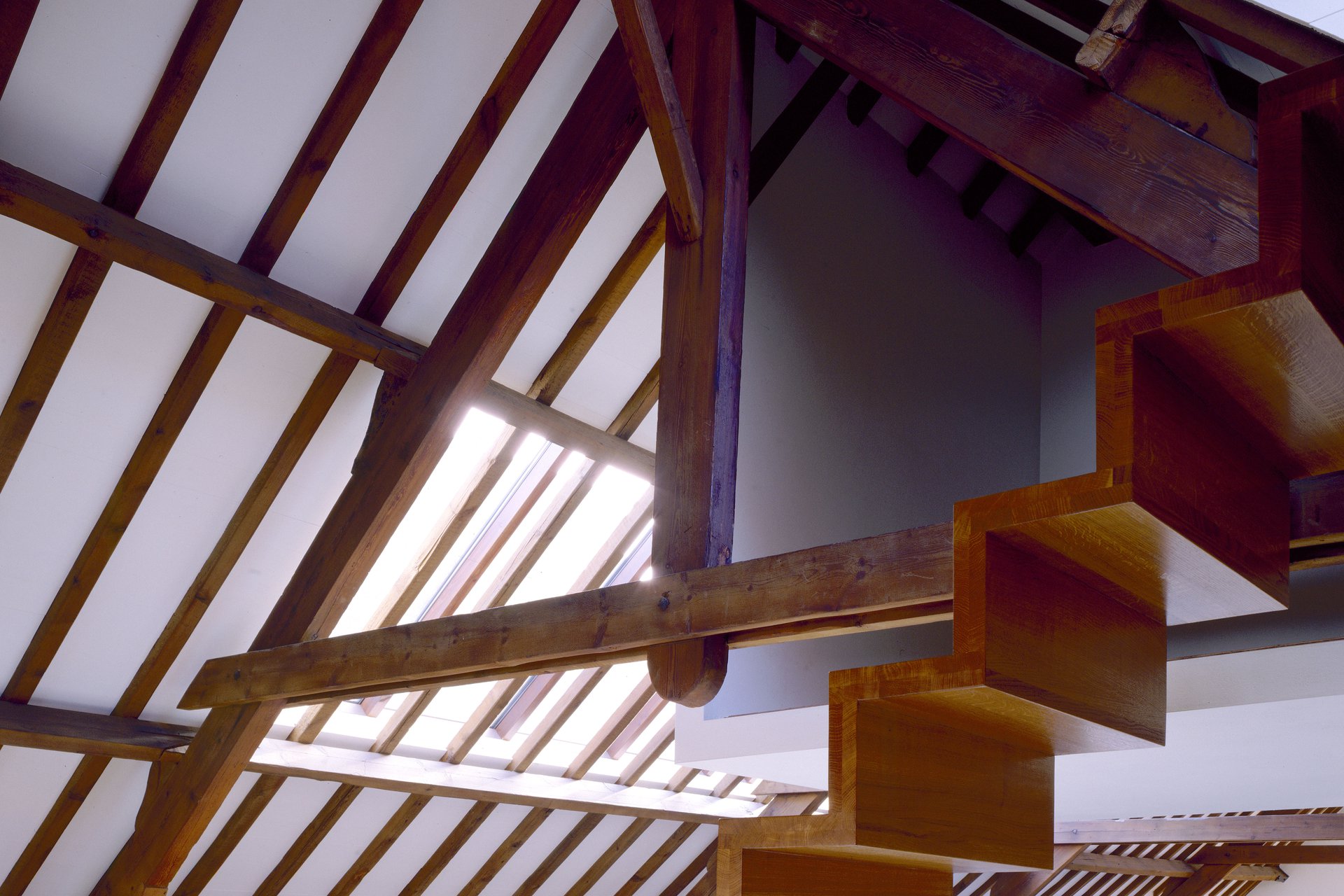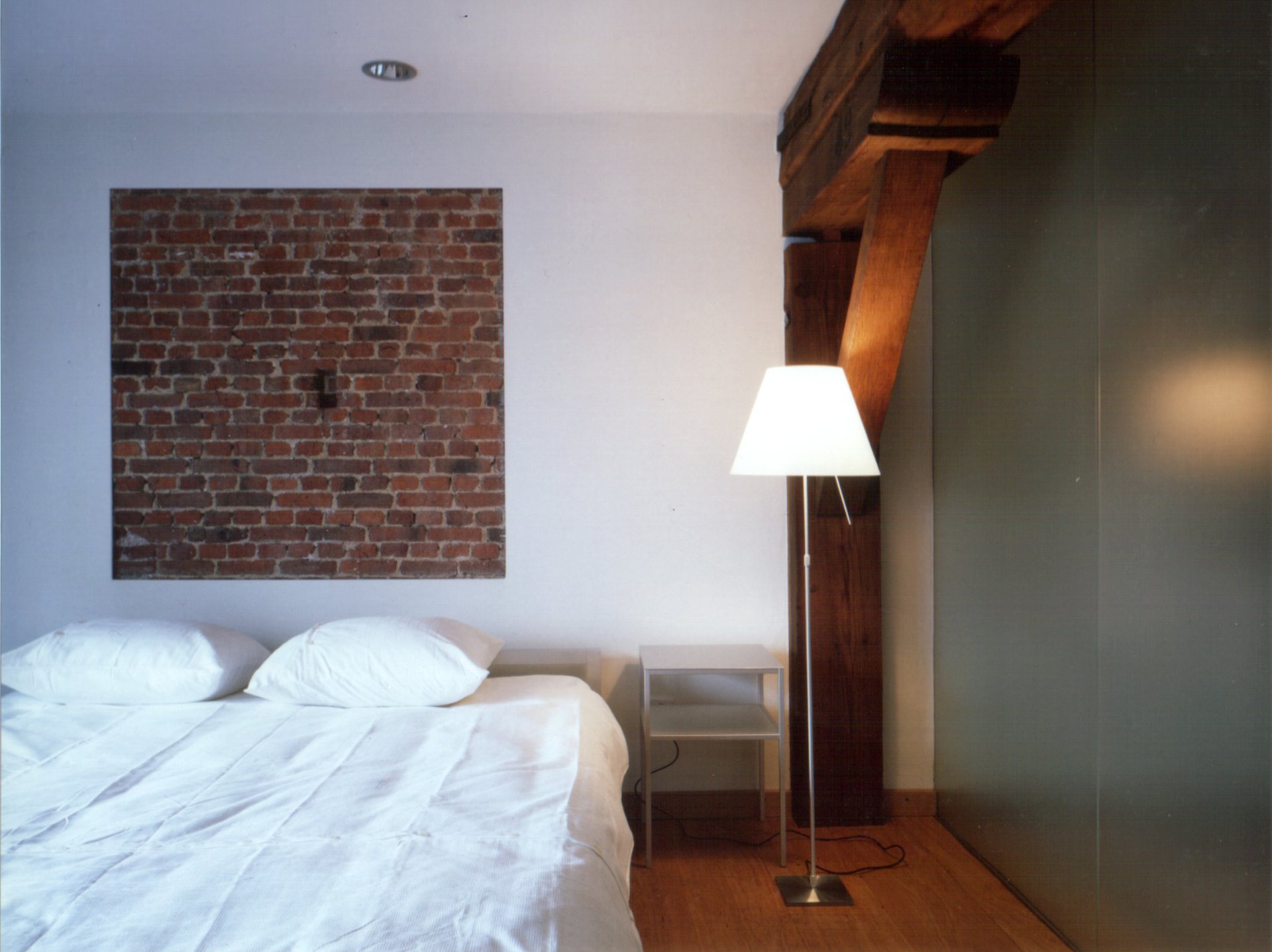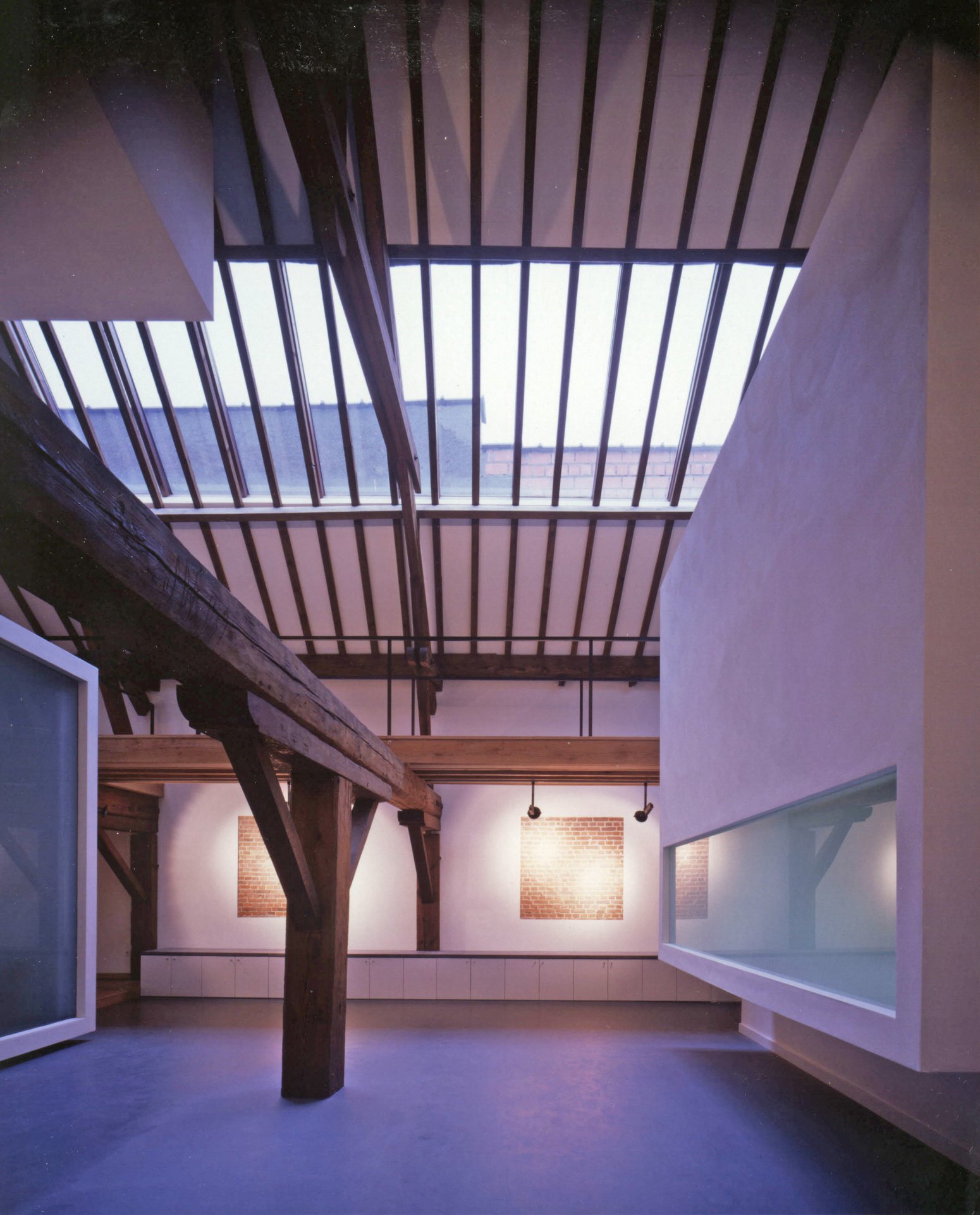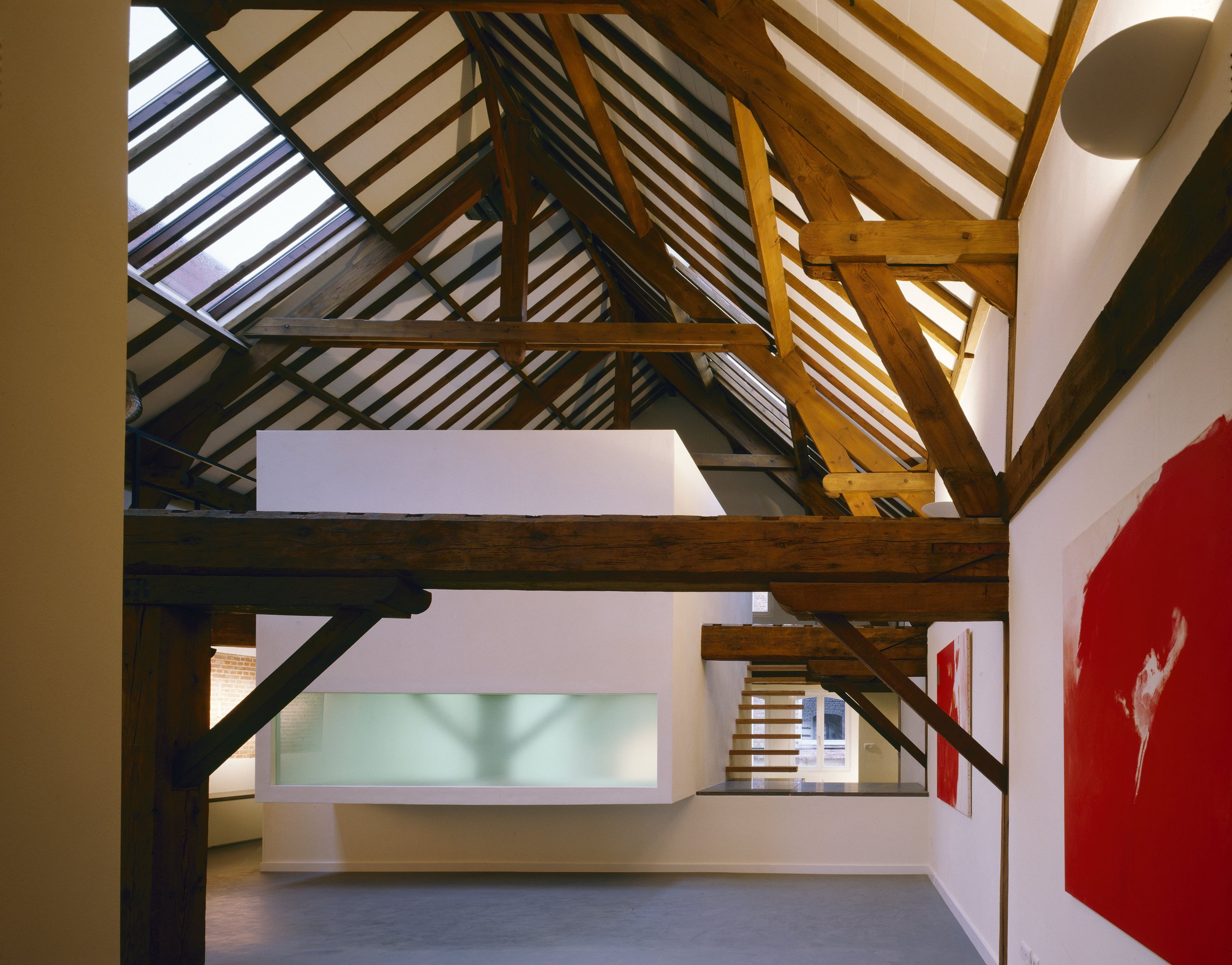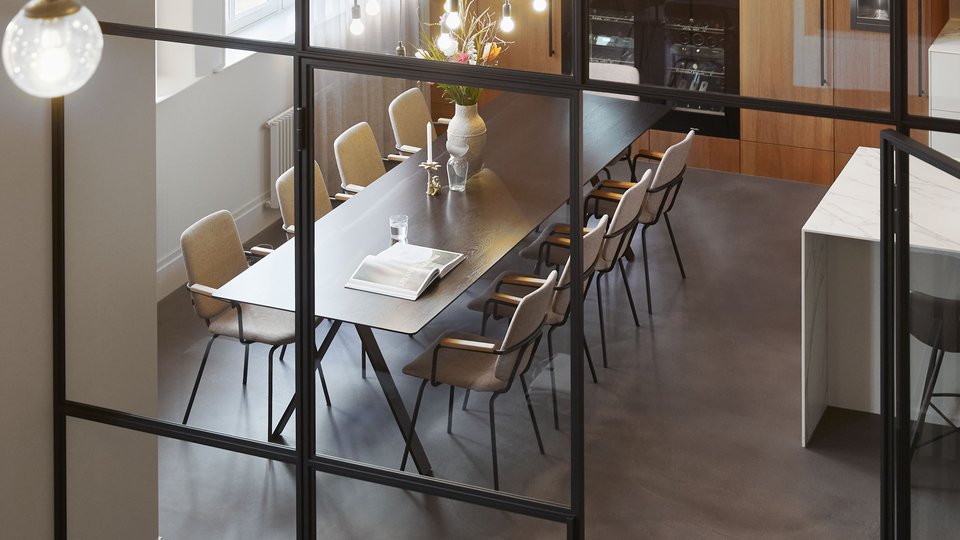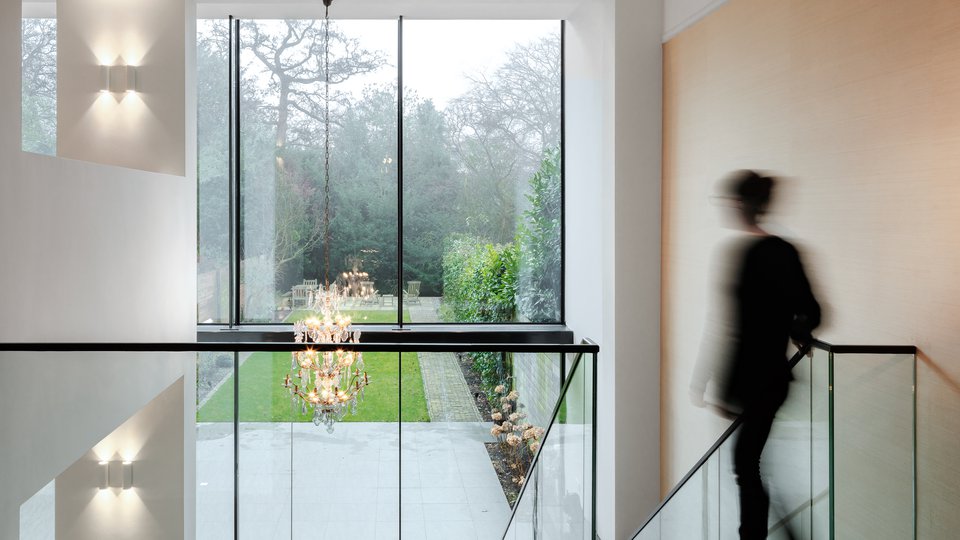| Client | Lensvelt |
| Location | Antwerpen |
| Timeline | January 1997 - October 1998 |

The former warehouse is a brick building with three major compartments, each floor measuring 8 x 21 meters, with a row of oak columns in the middle. The floors are constructed out of oak wood beams and rafters with pine planking. The loft occupies the top two floors.
The client, Mr. Lensvelt is a manufacturer of furniture, based in Breda. A dynamic social personality. His children seem to have inherited the same spirit, playful and active, turbulent like tornados. Going to sleep is for them like wasting time.
Already in the first sketches, we tried to design an open, communicative scheme where one could circulate. We tried to reduce all the necessary program elements like bathrooms, bedrooms and laundry room to a minimum so that we could maximise open space and circulation both horizontally and vertically.
The scheme should be minimalistic in nature in order to create a space where a hectic family life could flourish and come to a rest. In other words, the people should fill up the space not material. In the end, we developed three little cubes. The first cube just floats above the ground floor and contains two bathrooms. Sandblasted glass is the only barrier between the shower and living room.
We went through some intense discussions about the approach of the concept. Fokkema wanted to design the leftover space instead of the spaces mentioned in the program.

The second cube is halfway up containing a bedroom and carrying the kitchen. The third cube hangs from the ceiling of the tiled roof and contains the crow's nest bedroom for the boys. Abstract elements related in size and shape, made out of white plaster and sandblasted glass in an environment of old wooden beams and columns. The cubes sometimes wrap the structure and at other times function as a background showing details of the old structure.
Besides the fact that the cubes function as programmatic points of rest, they also mark the circulation. One cube has cantilevered oak planks coming out of the wall functioning as a stair. Another cube pokes through the floor and functions as the landing of a stair, which leads to the roof terrace.
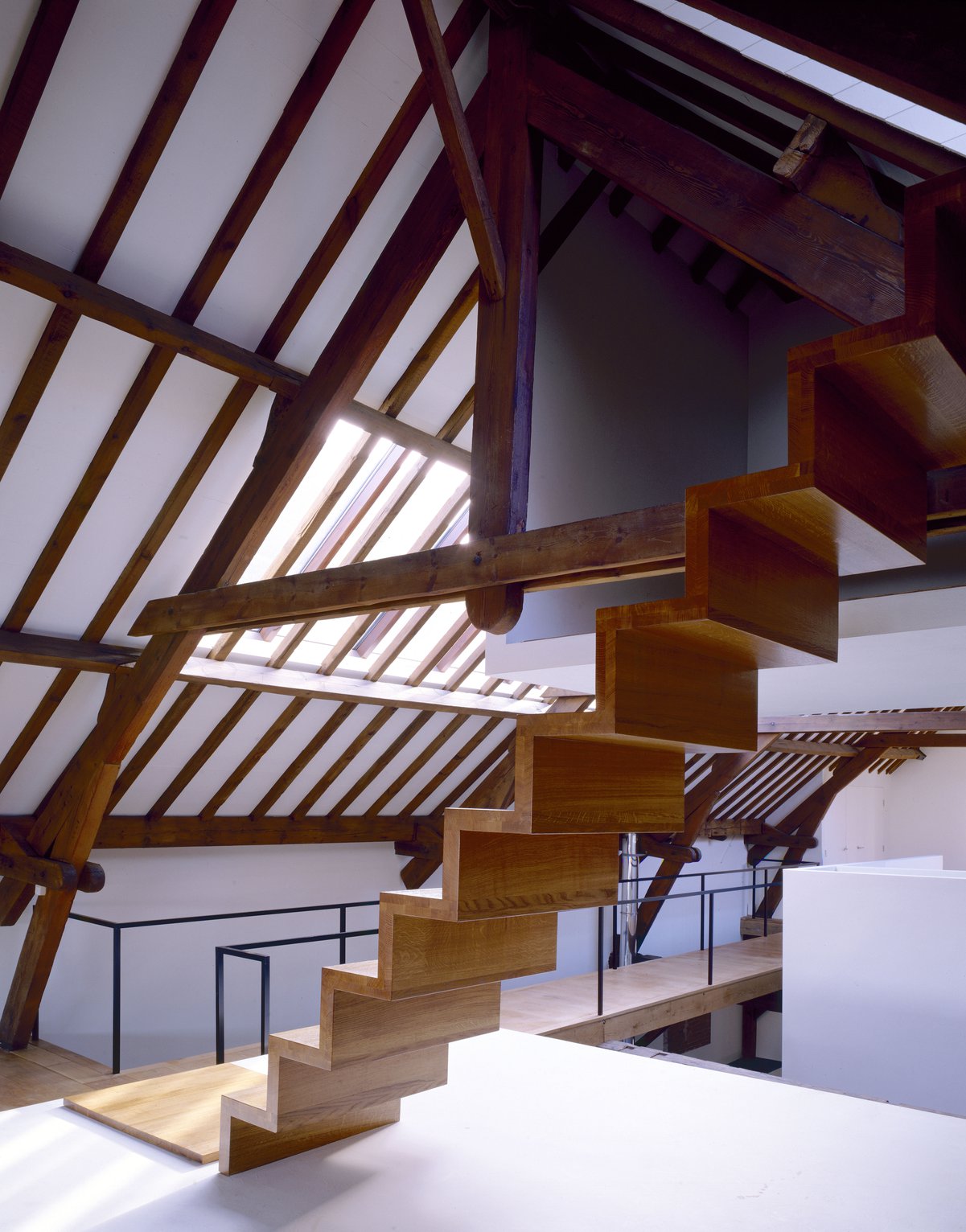
This stair is made out of only 6o mm thick carefully connected raisers and treads without any support beam. A technical accomplishment by Mr. Lensvelt’s factory without showing its technical complexity.
The ground floor function is mainly for playing and sleeping. The second floor contains the kitchen area and a living room in front. A long narrow strip of windows reveals the view over the old harbours of Antwerp.
In front of the window, there’s a full-length low sill with in the middle a fireplace without any sidewalls to contain the flames. The freedom of the flames almost functions as a metaphor for loft and the Lensvelt family.
Sandblasted glass is the only barrier between shower and living room.
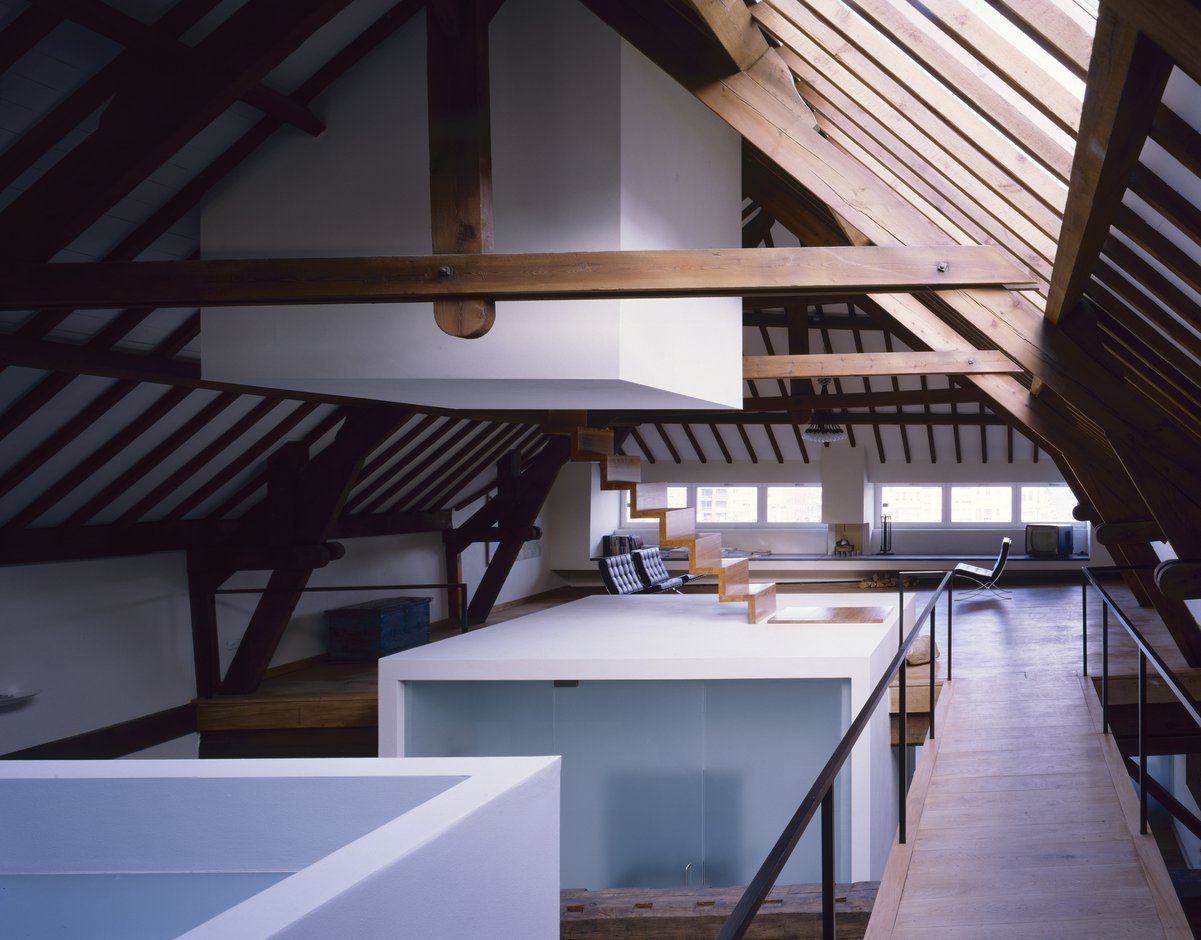
Architect. Diederik Fokkema
Projectarchitect. Hanneke Veldhuis
Colour scheme and paintings. Jacqueline van den Hout
Promotor. Hans Lensvelt
Photographs. Christian Richters
Date of completion: 1999
Surface area: 360m2
Construction Company: Hanegraaf aannemersbedrijf BV, Rijsbergen
Installations: Gebr. Kin Installatiebedrijven BV, Rijnen
Electricity: Elektro Michielsen, Chaam
Painting: Dictus Schilderwerken BV

